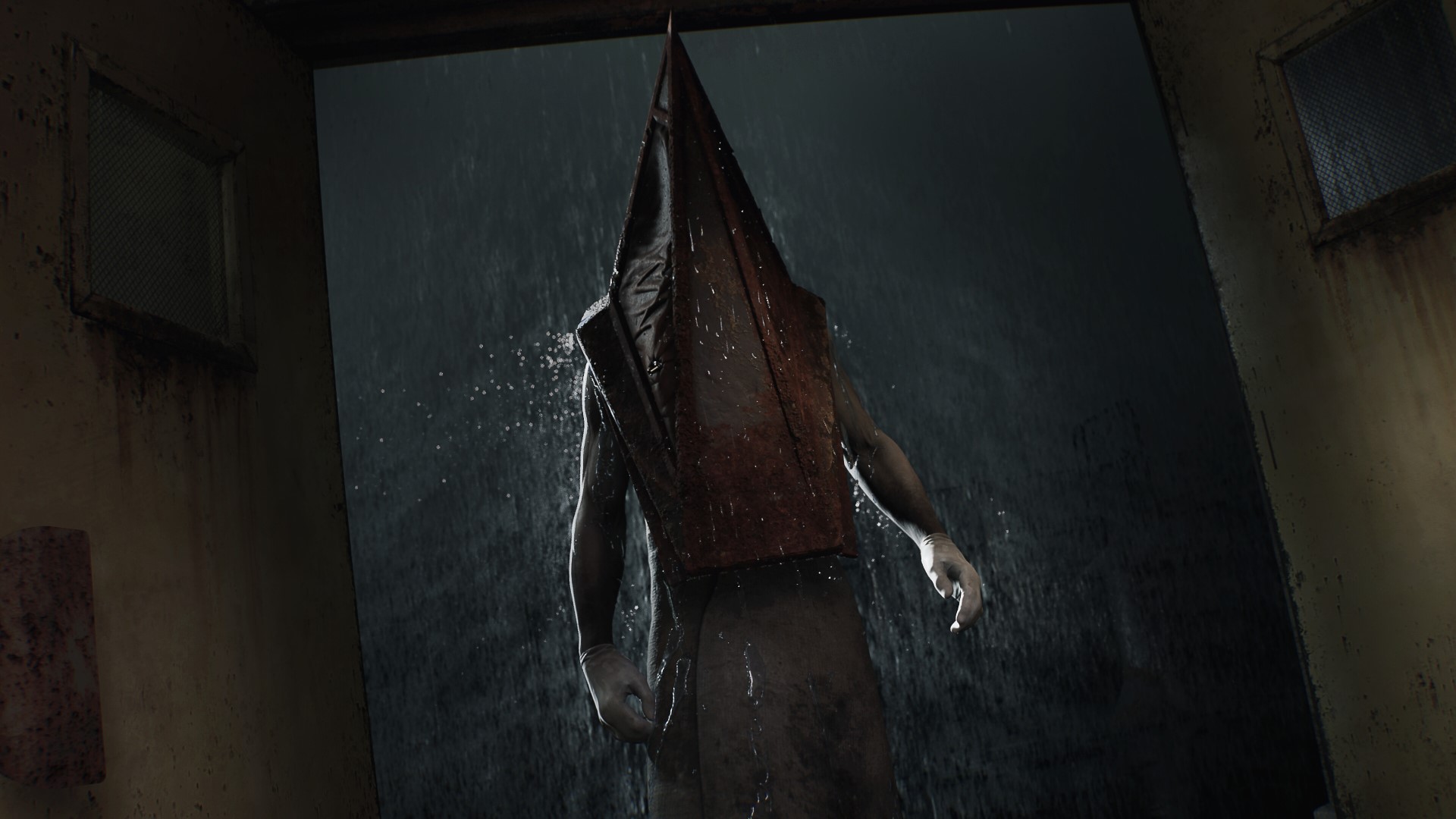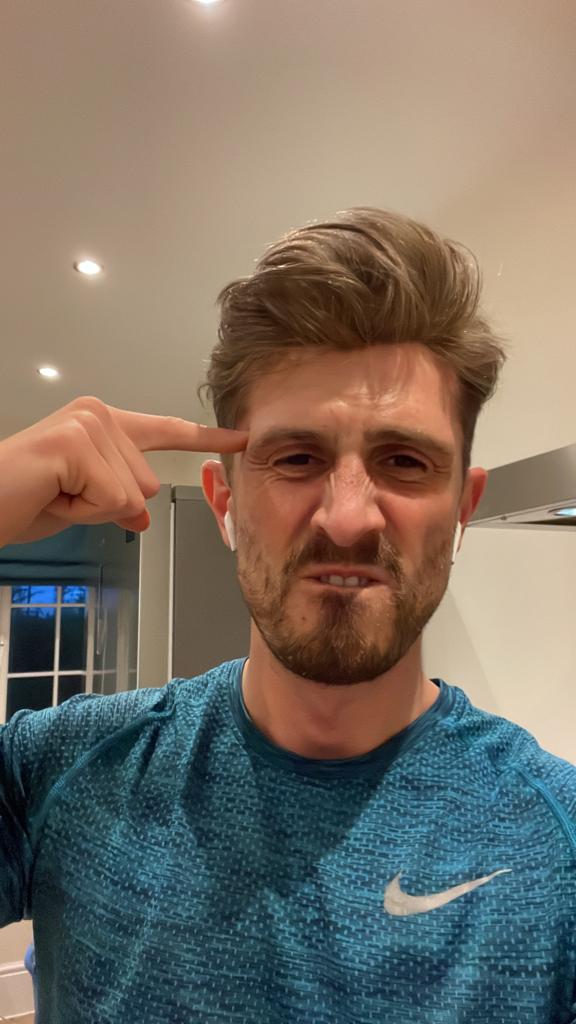Silent Hill 2 looks in safe hands, but is the franchise?
What's that coming over the hill?

In February 1999, the era when foggy games reigned supreme, Konami released a real pea souper. Silent Hill seemed at first like it might be cashing in on Resident Evil 2’s success – fixed camera angles. Tank controls. Japanese. Big on atmosphere.
But all of us who sat cross-legged before our PlayStations expecting a schlocky zombie horror adventure were about to uncover something a fair bit grimmer. It was a tale of loss, grief, psychosis, grim destiny, and pacts with the devil. Themes which, if I’m being honest, flew somewhat over the head of a 12-year-old boy.
Silent Hill 2 doubled down on the edgy, unsettling, non-genre nature of the series’ spookiness. Once again, it got under your skin by making you feel the sting of parental responsibility and the panic of losing trust in your own mind. Also: Pyramid Head.
Despite a litany of forgettable sequels, the singular approach to horror those first games take has kept the series on hallowed ground all this time. Horror, in films and video games especially, can easily look alike. Blood, teeth, little girls with long dark hair. Cabins. Masks. Silent Hill always took the high road. It avoided having to dip into this established vocabulary of scary, looking instead for some new and bizarrely esoteric thing to place in your nightmares. Say it out loud: a man with a large prismatic head. Doesn’t sound that scary on paper, does it? And that’s why Silent Hill 2 was so good.
Bloober reel

Now, say this aloud: walking around an art studio, looking at paintings. Hardly enough of a premise for horror to get James Wan signed up, and yet Polish studio Bloober team turned precisely that into one of the decade’s more memorable and invasive horror games.
Like Silent Hill, Layers of Fear understands how disorienting and alarming it is to experience the world through an unreliable narrator. You can’t trust your own eyes, and that’s used to great effect whenever you, you know… look at things.
It borrows a mechanic first used back in Clive Barker’s Undying from 2001 – look at a painting once, see a normal image. Clock it again, and you see the grim, malevolent reality looking back at you.
Sign up for breaking news, reviews, opinion, top tech deals, and more.
But it takes it further, spilling the oil paint out beyond the canvas in every sense. The point at which the fiction ends and reality begins becomes ever blurrier. You follow trails of abstract paint along corridors. There’s one moment where you find some text written on the wall behind a curtain, flapping atmospherically in the breeze. ‘Don’t look back,’ it says. I don’t need to tell you what happens immediately after that.
Like Silent Hill, Layers of Fear understands how disorienting and alarming it is to experience the world through an unreliable narrator
That unreliable narrative’s also used as a framing device, if you’ll excuse the excellent pun, to get you connected with the protagonist’s pain, guilt, and trauma. Most games would show you a cutscene of them drinking scotch, or looking up at the heavens, clutching their temples. Layers of Fear isn’t most games.
And while one suspects the studio arrived at its own name long before deciding to specialize in atmospheric horror titles, Bloober’s name has become as respected as it is improbable. It’s a trusted pair of hands when it comes to delivering intelligent scares, the kind YouTubers have a really tough time with because in lieu of jumpscares, there are slow-burn narrative revelations that build up until they make you run out of the room. It’s hard to convey that in a few jump cuts.
So the news that this is the team remaking Silent Hill 2 – in Unreal Engine 5, no less – seems both logical and exciting. A well-regarded horror specialist remaking a game that embodies exactly the values they’ve demonstrated a passion for in recent releases. It’s also news that makes you wonder: what might this game have been if Bloober Team was given the reigns to write a new story, with new characters?
Over the hill

Remakes are great. They’re tacit acknowledgement that the ‘90s and early ‘00s were just better for games, a sentiment I’ll always get behind. But since Kojima’s PT never took flight into a full release, Silent Hill as a franchise has been all but dead. And a remake won’t really breathe life into it.
Silent Hill f, on the other hand, is cut from whole cloth. It’s the first proper addition to the mainline franchise since 2012, and it’s being developed by Neobards Entertainment. A studio who, ironically, seems to specialise in remastering old Japanese survival horror titles.
We won’t know how these studio assignments shake out until both games are out in the wild, of course, and that will be years from now. But I wonder whether an opportunity’s been missed here to breathe life into a franchise. A franchise that took significant hits to its cultural cache not just from a litany of forgettable releases, but from the Kojima debacle. The PT saga. The Silent Hills reveal, and subsequent nuking of all Kojima-Konami relations. It might be a stretch to suggest the Layers of Fear dev could repair that in one fell swoop, but giving that studio to really say something in the Silent Hill universe instead of restoring an old classic might have been a start.

Ad creative by day, wandering mystic of 90s gaming folklore by moonlight, freelance contributor Phil started writing about games during the late Byzantine Empire era. Since then he’s picked up bylines for The Guardian, Rolling Stone, IGN, USA Today, Eurogamer, PC Gamer, VG247, Edge, Gazetta Dello Sport, Computerbild, Rock Paper Shotgun, Official PlayStation Magazine, Official Xbox Magaine, CVG, Games Master, TrustedReviews, Green Man Gaming, and a few others but he doesn’t want to bore you with too many. Won a GMA once.